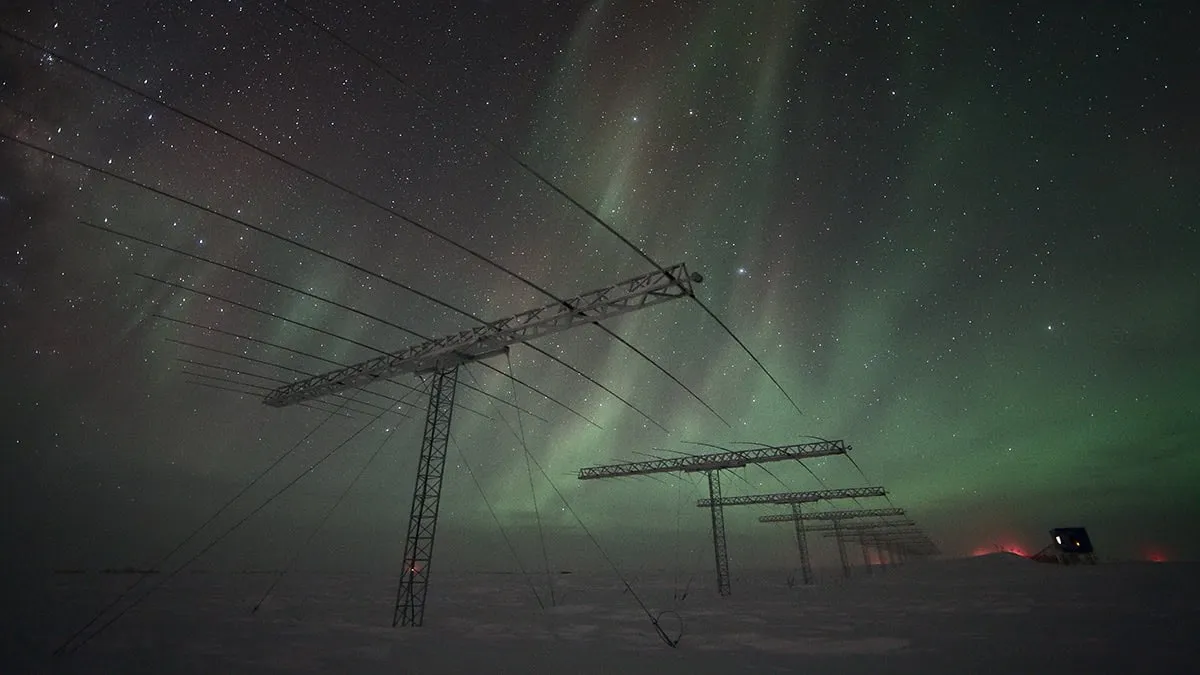
The recent observations by the European Space Agency’s Swarm trio of satellites reveal alarming changes in the Earth’s magnetic field, particularly over the South Atlantic Ocean. This area, known as the South Atlantic Anomaly (SAA), has seen a significant deterioration, expanding by an area nearly half the size of continental Europe since 2014. Concurrently, other regions, such as a strong magnetic field over Canada, have shrunk, while a robust field in Siberia has grown. These findings underscore the dynamic nature of Earth's geomagnetic field.
According to Chris Finlay, a leading geomagnetism researcher at Danmarks Tekniske Universitet, “The region of weak magnetic field in the South Atlantic has continued to increase in size over the past 11 years since the launch of the Swarm satellite constellation.” This ongoing growth was anticipated based on earlier observations, but it is critical to confirm that these changes in the Earth’s magnetic field persist. Finlay is the lead author of a new study published in the journal Physics of the Earth and Planetary Interiors, which analyzes the extensive data collected by the Swarm satellites.
The Swarm satellites were launched in 2014 with the primary objective of monitoring magnetic signals from various layers of the Earth, including its core and mantle, as well as the ionosphere and magnetosphere. The Earth's geomagnetic field is believed to be generated by a rotating core of molten iron located approximately 2,900 kilometers (or 1,800 miles) beneath the surface. This magnetic field continuously changes in strength, and researchers are still unraveling its complex mechanisms.
The geomagnetic field serves as a protective barrier for life on Earth, shielding the surface from harmful charged particles emitted by solar radiation. This interaction can be observed during spectacular phenomena like the northern lights. Additionally, the geomagnetic field extends into space, providing crucial protection for orbiting spacecraft, including satellites and the International Space Station (ISS).
However, the study warns that spacecraft and astronauts traversing the South Atlantic weak spot may face increased exposure to radiation. This heightened radiation could potentially lead to more malfunctions, damage, or blackouts for spacecraft hardware. Finlay emphasizes, “The main consequence is for our low-Earth-orbit satellite infrastructure.” As satellites pass through this weak field region, they encounter higher rates of charged particles, which can adversely affect their electronics.
Astronauts are not exempt from the dangers posed by this increased radiation. They face a greater risk of DNA damage and a heightened likelihood of developing cancer over their lifetimes. Finlay notes, “Astronauts will also experience these charged particles, but their times in orbit are shorter than the lifetime of most low-Earth-orbit satellites.” On average, astronauts aboard the ISS spend about six months in low Earth orbit, while satellites typically remain there for over five years—approximately ten times longer.
The intensity of the geomagnetic field varies significantly, ranging from about 22,000 to 67,000 nanoteslas. For comparison, a standard refrigerator magnet has an intensity of around 10 million nanoteslas. Within the SAA, the geomagnetic field’s intensity has fallen below 26,000 nanoteslas. The study indicates that this region has expanded by nearly 1% of the Earth's total surface area since 2014, with the weakest point now measuring 22,094 nanoteslas—a decrease of 336 nanoteslas since 2014.
In contrast, the strong geomagnetic field over northern Canada has decreased by 0.65% of the Earth’s surface area, with its maximum intensity dropping to 58,031 nanoteslas, an 801 nanotesla reduction since 2014. Conversely, a robust field region in Siberia has expanded by 0.42% of Earth’s surface area, with its maximum intensity increasing by 260 nanoteslas since 2014 to 61,619 nanoteslas today.
These unexpected changes in the Northern Hemisphere's geomagnetic field are related to the circulation patterns of the liquid metal within the Earth’s core, although the exact cause remains uncertain. Importantly, the study found no indication of an impending magnetic field reversal, which has occurred hundreds of times in Earth’s history. Finlay explains, “We know from paleomagnetic records that Earth’s magnetic field has weakened many times in the past, displaying weak field regions like the South Atlantic Anomaly, without reversing.” He suggests we are likely witnessing fluctuations on a timescale of decades to centuries.
The increasing risk from solar radiation to both satellites and astronauts traversing the SAA can potentially be mitigated by designing “hardened” spacecraft that can withstand such conditions. As this weak region expands, it becomes imperative to incorporate these considerations into future mission designs. Geophysicist Hagay Amit of Nantes Université in France, who did not participate in the study but has researched the SAA, notes that while several theories have been proposed to explain the changes, the actual mechanisms remain elusive. He emphasizes the importance of continuous, high-quality geomagnetic measurements for gaining vital insights into the dynamics of the deep Earth.